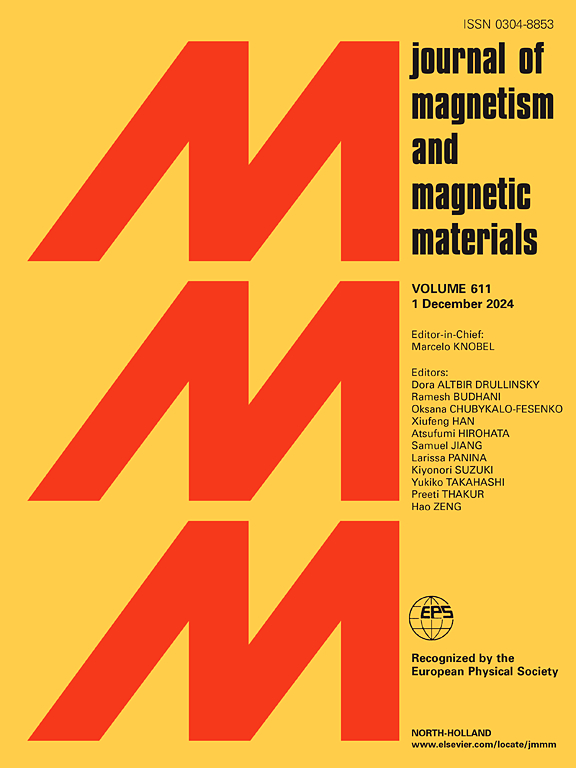Nonzero RMS magnetoresistance yielding control space partition of CrTe2 monolayer
IF 2.5
3区 材料科学
Q3 MATERIALS SCIENCE, MULTIDISCIPLINARY
引用次数: 0
Abstract
The study of magnetic phenomena in low-dimensional systems has largely explored after the discovery of two-dimensional (2D) magnetic materials, such as CrI3 and Cr2Ge2Te6 in 2017. These materials presents intrinsic magnetic order, overcoming the limitations predicted by the Mermin-Wagner theorem, due to magnetic crystalline anisotropy energy. Among these, CrTe2, a van der Waals 2D magnet, has gather significant interest due to its in-plane anisotropic magnetoresistance (AMR) and high Curie temperature. This study investigates the magnetic field-regulated resistance of CrTe2 monolayers in the context of spintronics applications. Utilizing the zigzag-ordered parameters obtained from prior simulations, we examine how external magnetic fields influence resistance states and control the ON/OFF state of nano-devices. The analysis demonstrates that specific magnetic field configurations, particularly those in the form of (0, 0, Bz(ω)), which is out-of-plane directed field, gives a non-zero root mean square resistance, indicating a functional resistance ON state. This provides a novel method for magnetically controlled current regulation in spintronic devices. The experimental results also reveal an interesting spin-flop transition in CrTe2 under a z-directed magnetic field, leading to y-directional magnetization. This phenomenon, combined with the material’s robust magnetic properties, positions CrTe2 as a promising candidate for next-generation memory and logic devices. By advancing the understanding of magnetic field manipulation in 2D magnetic materials, this research opens new pathways in the development of energy-efficient spintronics technology.
求助全文
约1分钟内获得全文
求助全文
来源期刊

Journal of Magnetism and Magnetic Materials
物理-材料科学:综合
CiteScore
5.30
自引率
11.10%
发文量
1149
审稿时长
59 days
期刊介绍:
The Journal of Magnetism and Magnetic Materials provides an important forum for the disclosure and discussion of original contributions covering the whole spectrum of topics, from basic magnetism to the technology and applications of magnetic materials. The journal encourages greater interaction between the basic and applied sub-disciplines of magnetism with comprehensive review articles, in addition to full-length contributions. In addition, other categories of contributions are welcome, including Critical Focused issues, Current Perspectives and Outreach to the General Public.
Main Categories:
Full-length articles:
Technically original research documents that report results of value to the communities that comprise the journal audience. The link between chemical, structural and microstructural properties on the one hand and magnetic properties on the other hand are encouraged.
In addition to general topics covering all areas of magnetism and magnetic materials, the full-length articles also include three sub-sections, focusing on Nanomagnetism, Spintronics and Applications.
The sub-section on Nanomagnetism contains articles on magnetic nanoparticles, nanowires, thin films, 2D materials and other nanoscale magnetic materials and their applications.
The sub-section on Spintronics contains articles on magnetoresistance, magnetoimpedance, magneto-optical phenomena, Micro-Electro-Mechanical Systems (MEMS), and other topics related to spin current control and magneto-transport phenomena. The sub-section on Applications display papers that focus on applications of magnetic materials. The applications need to show a connection to magnetism.
Review articles:
Review articles organize, clarify, and summarize existing major works in the areas covered by the Journal and provide comprehensive citations to the full spectrum of relevant literature.
 求助内容:
求助内容: 应助结果提醒方式:
应助结果提醒方式:


